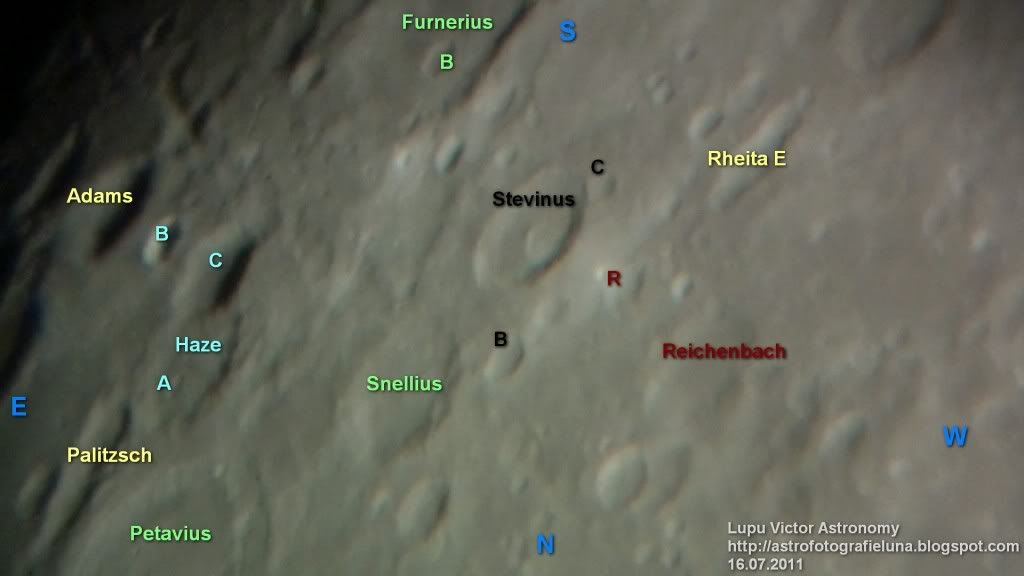Photographer: Victor Lupu
Optics: Celestron C8-Newtonian telescope, plossl 20mm, 2x Barlow
Mount: CG5 (EQ5)
Device: Sony CX105 to 5x optical zoom
Total magnification: 500 x zoom
Filter: No
Date: 16/07/2011
Location: Baia Mare, Romania
Processing: FastStone, video captures
Images in this article has reversed compass upside down as seen through the telescope.
Stevinus (75 km), is an impact crater on the south-east of the Moon, and is 3 km deep. Southeast is the great crater Furnerius (125 miles), and north-east is Snellius (83 km). To the northwest is Reichenbach (71 km).
Stevinus has a high interior wall and a central peak in mid. There are several small increases on the floor, in addition to the central peak. The crater is dating from the Copernican period, which lasted from 1.1 billion years ago until now. It is named after Simon Stevin, a belgian mathematician and engineer of the 16th century.
Snellius (83 km), it is not too far from Stevinus. On north-east is the huge crater Petavius (177 km), which is seen in the pictures above only partially (the south).
Snellius's edge is eroded, with some small overlapping craters. The floor is irregular and uneven. Western edge marks the beginning of Snellius Vallis, one of the longest valley of the Moon. It has about 500 km heading north-west almost to the Nectaris sea's edge. Its origin is associated with the formation of this sea.
Monday, 10 October 2011
IMAGES AND VIDEOS
About me
(8)
Astronomical Phylosophy
(5)
Astronomy Labels
(1)
Astronomy terms
(5)
Craters-Reinhold and Lansberg
(2)
Craters-Santbech
(5)
DSLR Hyperion pictures
(4)
DSLR astronomy pictures
(4)
DSLR telescope pictures
(21)
Occultations
(5)
Rima Ariadaeus
(4)
Rupes Altai
(10)
The colours of the Moon
(7)
Things about the Moon
(9)
Weird sightings
(8)




 Monday, October 10, 2011
Monday, October 10, 2011
 Unknown
Unknown





 Posted in:
Posted in: 


0 comments:
Post a Comment